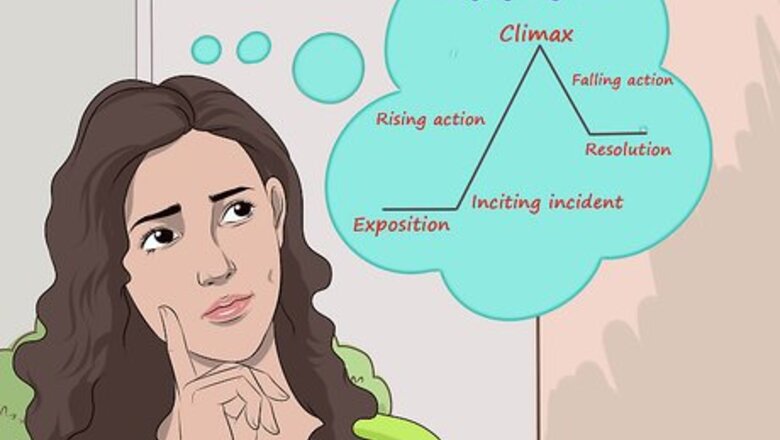
views
Using a Plot Diagram

Identify the sections in a plot diagram. One of the more traditional ways to structure a story is to use the triangle plot diagram, also known as Freytag's Pyramid. Freytag's Pyramid is broken into six sections: the set up, the inciting incident, the rising action, the climax, the falling action, and the resolution. The diagram appears like a triangle or a pyramid, with the set up at the bottom of the triangle, followed by the build up of the inciting incident and the rising action. The tip of the triangle is the climax of the story, which is then followed by downward slant of the falling action and flattening out of the triangle, or the resolution of the story. This type of plot diagram is often used in novels to help structure the action of the story. It can be a useful way to make sure you have all the necessary elements of a story in your novel and many readers will respond positively to a text that is structured based on a plot diagram that has a rise and fall. You can draw your own plot diagram and write out each section or plot point directly on it. Sometimes it can be helpful to have a visual reference as a guide for your story.

Create a strong set up. Though many novels start by folding the set up into the inciting incident, it may help you to write down your set up during the planning stages of your story. Identifying the set up of your story could also help you identify your protagonist as well as the themes or main ideas in your story. Your set up should include the setting of the story, information about your protagonist, and introduce the protagonist's conflict. It may be a few lines that address these elements or an actual scene where your protagonist is speaking to other characters and moving around in the setting. For example, the set up for the first book in the wildly popular Harry Potter series by J.K. Rowling, Harry Potter and the Philosopher's Stone, focuses on introducing the reader to the protagonist of the series, Harry Potter. It also introduces the reader to the world of the Muggles and the world of wizards at Hogwarts School of Witchcraft and Wizardry.
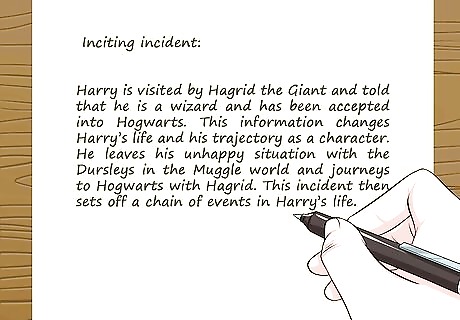
Identify the inciting incident. The inciting incident in your story will be the event that changes the course of your main character's life. It should take the protagonist by surprise and feel risky to the protagonist. Often, the inciting incident appears right after the set up is introduced in a novel. For example, in Harry Potter and the Philosopher's Stone, the inciting incident is when Harry is visited by Hagrid the Giant and told that he is a wizard and has been accepted into Hogwarts. This information changes Harry's life and his trajectory as a character. He leaves his unhappy situation with the Dursleys in the Muggle world and journeys to Hogwarts with Hagrid. This incident then sets off a chain of events in Harry's life.
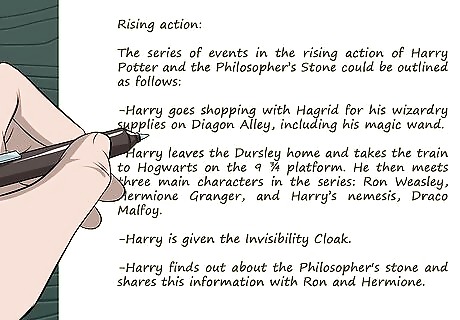
Create rising action. The rising action, or the upward slope from the inciting incident to the climax, is often the longest section of a novel or a story. In the rising action section, you will develop your characters, explore their relationships to each other and pace out all the important events that will allow you to get to the climax. The rising action should get more suspenseful the closer you get to the climax. Because the rising action section is often made of a series of events, you can outline each event in your plot diagram. Make sure the events become more suspenseful and continue to up the stakes the closer you get to the climax. For example, the series of events in the rising action of Harry Potter and the Philosopher's Stone could be outlined as follows: Harry goes shopping with Hagrid for his wizardry supplies on Diagon Alley, including his magic wand. Harry leaves the Dursley home and takes the train to Hogwarts on the 9 ¾ platform. He then meets three main characters in the series: Ron Weasley, Hermione Granger, and Harry's nemesis, Draco Malfoy. Harry is given the Invisibility Cloak. Harry finds out about the Philosopher's stone and shares this information with Ron and Hermione.
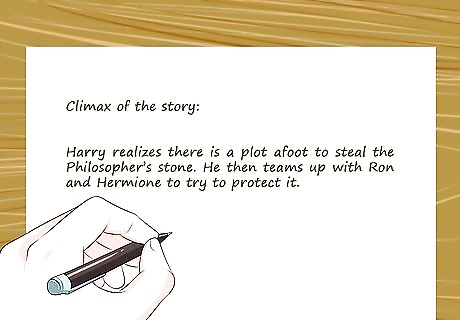
Write out the climax of the story. The climax of your story is the high point and should feel like the most important moment for the protagonist. It could be a major setback or challenge that the protagonist has to deal with or a big decision the protagonist has to make. Often, the climax will be an external event that the protagonist has to survive to get to the falling action and the resolution of the story. For example, in Harry Potter and the Philosopher's Stone, the climax of the story appears when Harry realizes there is a plot afoot to steal the Philosopher's stone. He then teams up with Ron and Hermione to try to protect it.
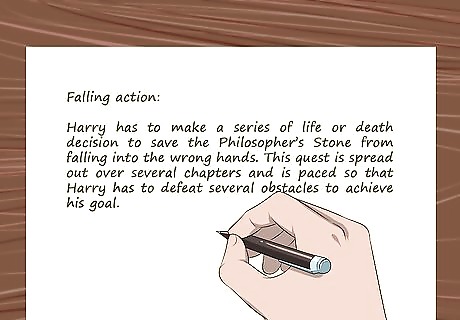
Identify the falling action. The falling action is usually the most action-packed part of the story, where your story is speeding down the tracks of the roller coaster to reach the resolution. The reader should be in suspense throughout the falling action and learn how the protagonist deals with the climax of the story. Your falling action may occur over several chapters, especially if the protagonist is dealing with a big climax. The falling action can feel like a journey, albeit a fast paced one, that gets the characters to the resolution of the story. For example, in Harry Potter and the Philosopher's Stone, Harry has to make a series of life or death decision to save the Philosopher's Stone from falling into the wrong hands. This quest is spread out over several chapters and is paced so that Harry has to defeat several obstacles to achieve his goal.
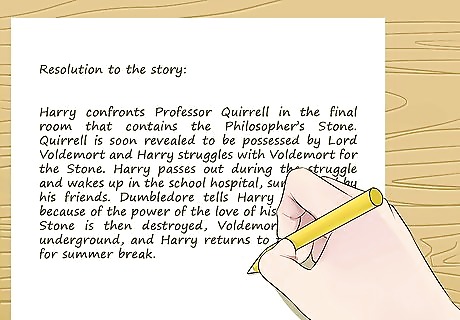
Create a resolution to the story. The resolution to a story is sometimes called a conclusion, as it occurs at the very end of the novel. It should let the reader know if your protagonist is successful and achieves what he wants, or if he fails. Often, the resolution also reveals how the protagonist has been changed over the course of the book. This could be a gradual change that is physical, mental, psychological, or all of the above. Your protagonist should view their world differently at the end of the novel than they did at the beginning of the novel. For example, in Harry Potter and the Philosopher's Stone, the resolution occurs when Harry confronts Professor Quirrell in the final room that contains the Philosopher's Stone. Quirrell is soon revealed to be possessed by Lord Voldemort and Harry struggles with Voldemort for the Stone. Harry passes out during the struggle and wakes up in the school hospital, surrounded by his friends. Dumbledore tells Harry he survived because of the power of the love of his mother. The Stone is then destroyed, Voldemort goes back underground, and Harry returns to the Dursley's for summer break.

Play with moving around the sections of your plot diagram. Though starting with the standard plot diagram can be useful in the drafting stages, you should also consider adjusting the sections and moving them around in subsequent drafts of your story. Consider starting with the inciting incident right away and then moving into the set up, or moving the climax so it appears at the very end of your story, rather than in the later half of the story. Playing around with the plot diagram can make your story feel more unique and dynamic.
Using the Snowflake Method

Write a one sentence summary. The Snowflake method is often used to structure novels, but it can be used to structure short stories too. This method allows you to work through the plot of your story in increments and structure the scenes required for your story in a spreadsheet. To get started with this method, you will need to come up with a one sentence summary of your story. It should sell your story and highlight the big picture. Keep the summary short and sweet, using non-specific descriptions and terms with no names. Try to use 15 words or less and focus on tying a larger theme with character actions. For example, your one line summary might read: “A seemingly perfect marriage is disrupted when the wife disappears.”
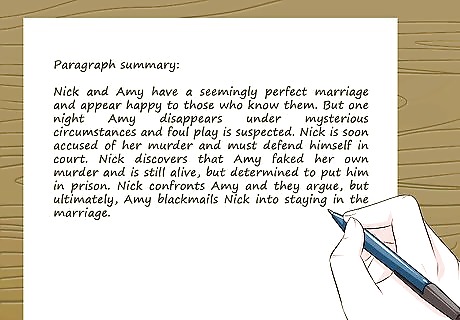
Create a one paragraph summary. Once you have your one line summary, you should expand it to a full paragraph that describes the story set up, the major events, the climax, and the ending of the story. You can use the structure of “three disasters plus an ending” where three bad things occur in the story and build up to the climax of the story. The idea is that things only get worse and worse for the protagonist until they reach the climax and then the ending or resolution of the story. Your paragraph will be made up of five sentences. One sentence should describe the story set up. There should be one sentence for each of the three disasters. Then, one final sentence that describes the ending. Your paragraph may read: “Nick and Amy have a seemingly perfect marriage and appear happy to those who know them. But one night Amy disappears under mysterious circumstances and foul play is suspected. Nick is soon accused of her murder and must defend himself in court. Nick discovers that Amy faked her own murder and is still alive, but determined to put him in prison. Nick confronts Amy and they argue, but ultimately, Amy blackmails Nick into staying in the marriage.”
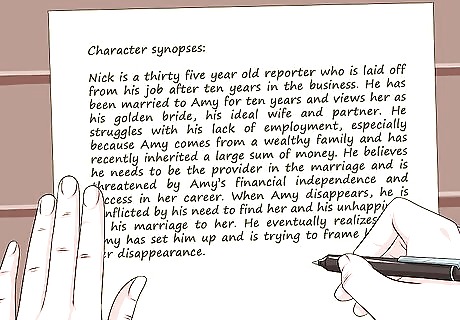
Create character synopses. Once you have your summary, you should focus on fleshing out your characters. Create a storyline for each of your main characters, noting important characteristics like the character's name, the character's motivation, the character's goal, the character's conflict, and the character's epiphany. Each character's storyline should be about one paragraph long. Your character synopses do not need to be perfect or polished. You will likely go back and tweak them later or deviate from them when you start writing scenes of the novel. But at least the synopses will help you get a better sense of your characters and where they fit within your story. An example character synopsis might be: “Nick is a thirty five year old reporter who is laid off from his job after ten years in the business. He has been married to Amy for ten years and views her as his golden bride, his ideal wife and partner. He struggles with his lack of employment, especially because Amy comes from a wealthy family and has recently inherited a large sum of money. He believes he needs to be the provider in the marriage and is threatened by Amy's financial independence and success in her career. When Amy disappears, he is conflicted by his need to find her and his unhappiness in his marriage to her. He eventually realizes that Amy has set him up and is trying to frame him for her disappearance.”
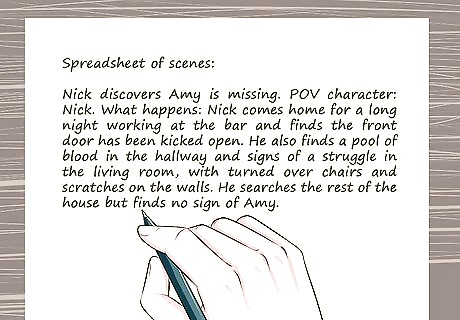
Make a spreadsheet of scenes. Once you have written character synopses for each of your main characters and have your one paragraph summary, you should try to expand your summary into scenes using your characters. The list of scenes will help you get a better sense of the overall plot of the story. Use a spreadsheet program to organize the scenes, as this will make it easy to write out each scene in order. Depending on how long your story is, you may have 50 scenes or over 100 scenes. Create two columns in the spreadsheet, one for the POV character in the scene and another column to explain briefly what happens in the scene. Then, list the scenes one by one, using your summary as a guide. For example, one entry might read: “Nick discovers Amy is missing. POV character: Nick. What happens: Nick comes home for a long night working at the bar and finds the front door has been kicked open. He also finds a pool of blood in the hallway and signs of a struggle in the living room, with turned over chairs and scratches on the walls. He searches the rest of the house but finds no sign of Amy.” Continue to do this, creating scenes that correspond to your plot summary. You should then have an outline of your plot and a list of scenes that correspond to your plot. This should make it easier to then put the scenes together and form a cohesive story.
Creating a Plot Outline for an Assigned Text
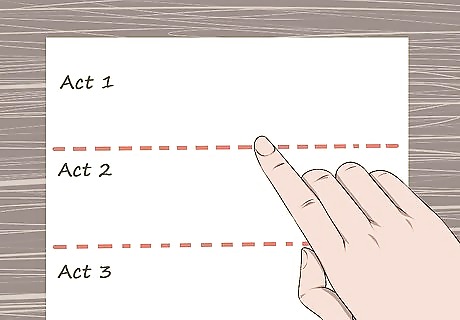
Divide the outline into three acts. To create a plot outline for a text that you were assigned in a class, not an original text, divide your outline into three acts. Most novels and books can be broken down using the three act structure. Use a word processing document or a piece of paper to create three distinct sections, titled Act 1, Act 2, Act 3. Plot outlines are usually one to two pages long, depending on the length of the book. Aim to be concise and focus on the key points of the plot.
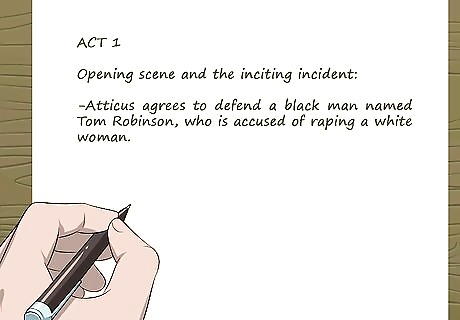
Summarize the opening scene and the inciting incident. Start Act 1 by describing the opening scene of the book. The opening scene will often establish the characters and the setting. The protagonist of the book is usually in the opening scene as well. Keep the summary short, about 100-150 words. Note the key details of the opening scene, including the names of the characters, any physical details or personality traits mentioned, and the setting. The beginning of your plot outline for Act 1 should also include the inciting incident, which sets your character on a quest or mission. The inciting incident may also lead to the main conflict in the novel. For example, in Harper Lee's To Kill a Mockingbird, the inciting incident of the book occurs when Atticus agrees to defend a black man named Tom Robinson, who is accused of raping a white woman.

Describe the main problem or conflict. The final section of Act 1 will focus on the main problem or conflict in the novel. The main problem or conflict will be the biggest obstacle the protagonist has to deal with or face. It will raise the stakes of the story and cause the protagonist to make a decision or act in a certain way. The inciting incident usually feeds into the main problem or conflict. For example, in Harper Lee's To Kill a Mockingbird, the main conflict occurs as a result of the inciting incident, as Atticus' decision to defend Tom Robinson leads to the abuse of Jem and Scout by the other children and members of the community.
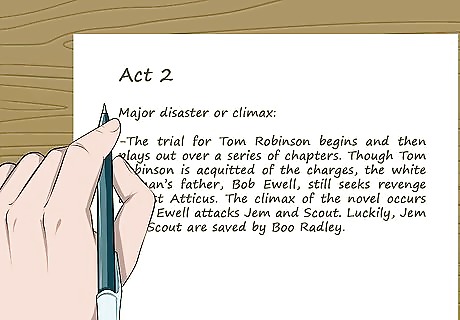
Summarize the major disaster or climax. Act 2 will usually build up to the major disaster or climax of the novel. The disaster or climax often occurs about ¾ of the way into a book or 75% of the way into a story. You may note several smaller incidents that occur as rising action, leading up to the climax. For example, in Harper Lee's To Kill a Mockingbird, the rising action occurs as the trial for Tom Robinson begins and then plays out over a series of chapters. Though Tom Robinson is acquitted of the charges, the white woman's father, Bob Ewell, still seeks revenge against Atticus. The climax of the novel occurs when Ewell attacks Jem and Scout. Luckily, Jem and Scout are saved by Boo Radley.

Describe the resolution or wrap up. The final Act of the novel, Act 3, will contain the resolution of the novel. The resolution or wrap up will indicate the end of the protagonist's journey. The protagonist usually reaches a new understanding or a realization that she did not have at the beginning of the novel. For example, in Harper Lee's To Kill a Mockingbird, the protagonist, Scout, realizes that she misunderstood Boo Radley and comes to sympathize with Boo as a person. She also embraces her father, Atticus', advice to demonstrate sympathy and understanding for others, rather than hatred or prejudice.












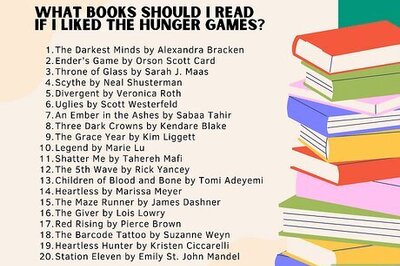





Comments
0 comment